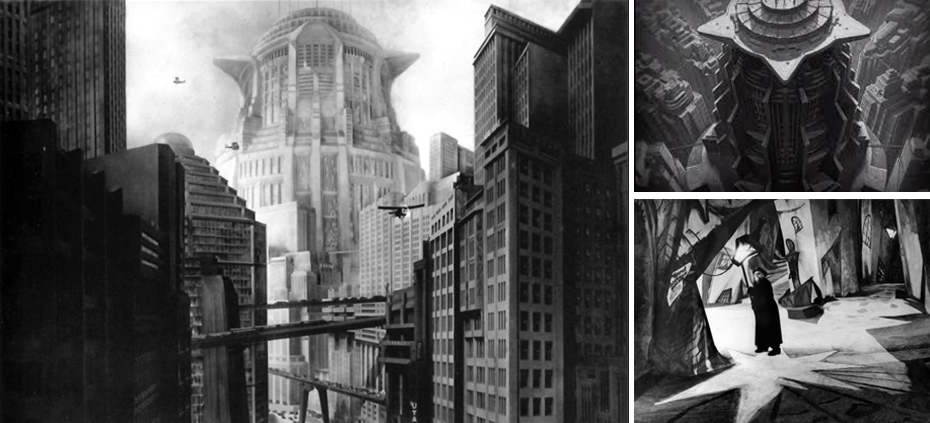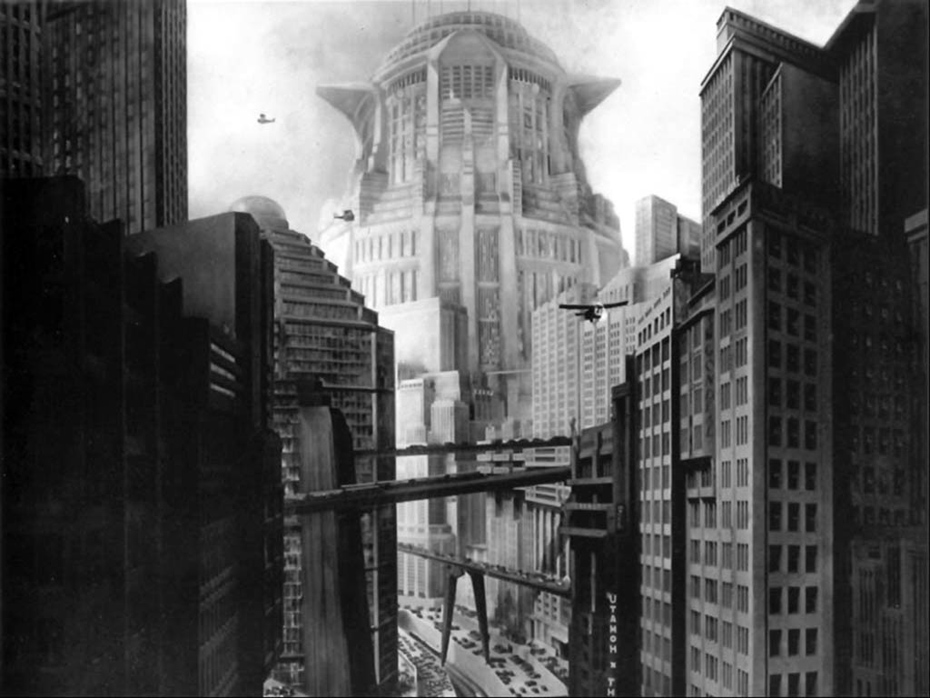Eleonora Usseglio Prinsi explains how the camera lens has given us a unique insight into the development of the city

Looking at the city through the lens of a camera is one of the most interesting and insightful ways of understanding social behaviour and urban evolution. In this sense, the 1920s is perhaps one of the richest periods to typify this, with films such as The Cabinet of Dr. Caligari (1920) and Metropolis(1927) characterising the strong relationship between the artistic vanguard and the social framework of urban living.
German expressionism – with its legacy in paint and cinema – embodies the geometries key to understanding the complex psychology behind the 1920s cinema screen. Robert Wiene’s Dr Caligari utilises fully stylised sets with abstract spaces to represent not only different scenes, but similarly movement, tension and fear. Recreated through an interaction of lines, apparently randomly drawn, they actually recreate, (forgetting the rules of perspective) interiors and corners of the city.The need to represent social psychology is even stronger in Fritz Lang’s 1927 film Metropolis. The feeling of alienation, of being just a number in a much larger, anonymous social whole is derived from the city, built as an evolution of the assembly-line methodologies of Henry Ford’s Detroit mass production lines. Symbolising the importance of time, elements such as the 10-hour clock and infrastructure – elevators to move workers at shift change – become unrealistically big to draw attention to how mechanisation has become essential to the working principles of the city.

The set design of Metropolis found its inspiration partly in the Italian Futurism movement, pioneered by artists such as Antonio Sant’Elia and Filippo Tommaso Marinetti. In his drawing La cittá nuova, Sant’Elia envisioned a utopian “new city” driven by speed, technology, skyscrapers and mechanisation. As in the film, tall, thin buildings composed a new way of designing the city. The coming of glass and steel materialised the Futuristic dreams through the work of master architects Mies Van der Rohe with the project for Friedrichstraße in Berlin and Walter Gropius with the Chicago Tribune competition of 1922.




